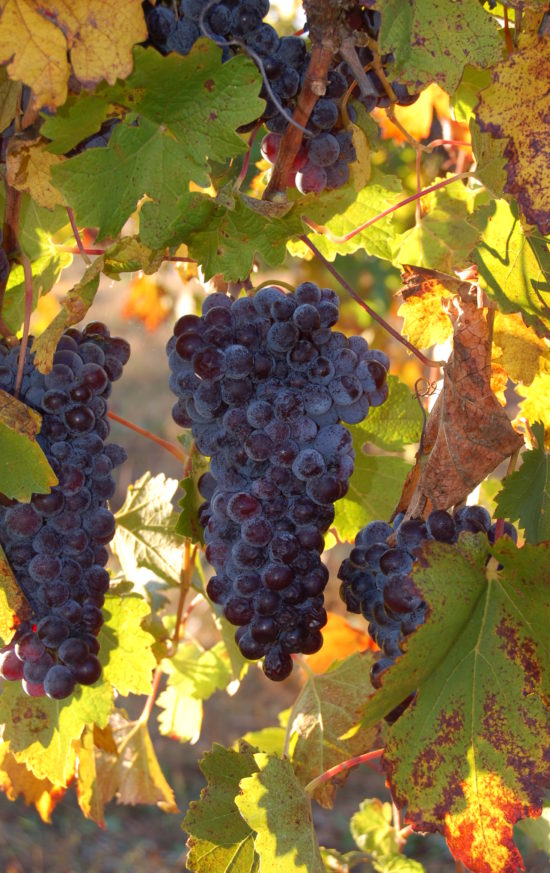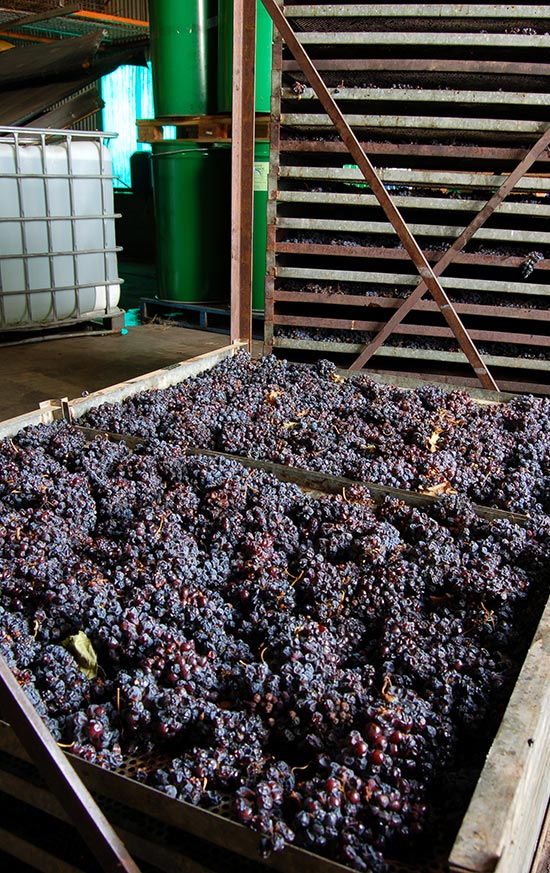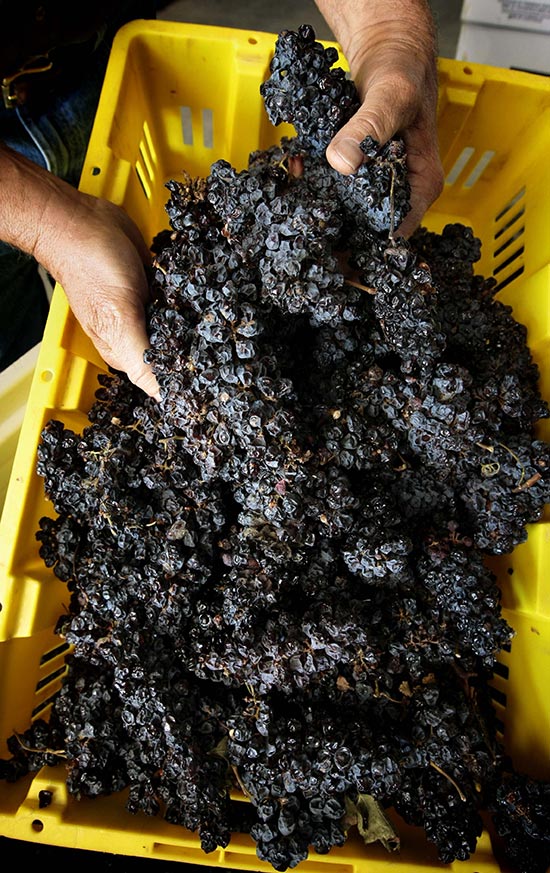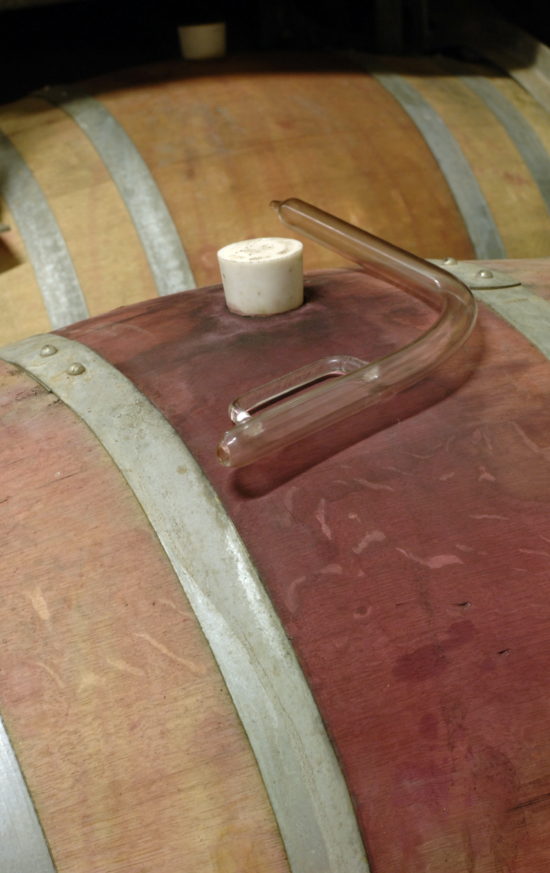Hilltops (Young, NSW)
Hilltops is in the southern region of New South Wales and sits atop a large granite rock. This big rock is 150km long and 50km wide and blocks the westward flow of the Murrumbidgee River from Australia’s national capital, Canberra.
Over eons the rock has weathered to produce a layer of decomposed granite soil up to 15-metres deep. Dust storms from central Australia deposited red sand and clay onto this soil, especially on the leeward side of ridges. This event produced the distinctive red colour and clay layers in the soil.
The soils are deep and well drained, ideal for grapevines and the dominant winter rainfall usually ensures good soil moisture reserves for spring growth.
The rock is 500 to 600 metres above sea level and this ensures cool nights in summer and in autumn when the grapes are ripening.
A range of hills to the north protects the Hilltops region from northern sub-tropical summer storms resulting in cool, dry, sunny autumns.
Seams of gold lured prospectors to the region in the 1800s. The following century soldiers were recruited in the nearby town of Harden for the first Light Horse Brigade.
Peace prevailed after the Great War and soldiers returned to take up rural settlement blocks, many of them orchards. The locality of Prunevale was established to provide prunes destined to keep the British Empire ‘regular’.
Subsequently, the Empire waned and the region’s main centre, Young became the cherry capital of Australia. Prunevale now produces more grapes than prunes. While the predominant varieties are cabernet sauvignon and shiraz, this distinguished, elevated site is rapidly proving its capacity to produce exceptional quality Italian origin varietal wines.
‘Brian Freeman – a former university wine science professor – is doing remarkable things with his eclectic Hilltops vineyard.’
Huon Hooke, GOOD FOOD GUIDE
Vineyard
The home block vineyard (560 metres elevation) was established in the Hilltops region of NSW in 1999. The vines are trained to a bilateral spur-pruned cordon and the canopy is vertically shoot positioned. The first crop was removed to facilitate vine development leading to the initial vintage in 2002. The 15-metre deep soils are derived from speckled dog granite, which over time has combined with red wind-blown sand and silt from Australia’s Red Centre. This fine silt has formed a clay layer at a depth of one metre. The soils are both well structured and drained, which allows the vines to establish roots to a depth of several metres.
In 2004 we acquired the neighbouring property, one of the original vineyards in the Hilltops region developed over three decades ago. Significantly, the plantings included mature 40-year-old pinot noir vines (many since grafted to nebbiolo and sangiovese) and a patchwork of white varieties including pinot gris, riesling, chardonnay, sauvignon blanc, gewürztraminer, semillon and several curiosities, the aromatic grape aleatico and the Hungarian siblings – furmint and harslevelu.
Just over 10 years later the FREEMAN estate expanded again with the acquisition of two nearby established vineyards, bringing the total area under vine to 200 hectares. Some vineyard blocks have been reworked to allow expansion of the Italian origin varieties like Prosecco, while the majority of the more recently acquired vineyards produce quality grapes for sale to other NSW wineries.
Winemaker
BRIAN FREEMAN
Having trained many of Australia’s winemakers and viticulturists during his decade at the helm of the Wine Science at Charles Sturt University in Wagga Wagga, NSW, Brian Freeman decided to establish his own vineyards in the elevated Hilltops region. His venture started with Australia’s only plantings of two classic Italian-origin varieties – Rondinella and Corvina – and an intention to craft a unique, expressive savoury and complex red wine that would stand out from the crowd.
Brian travelled to northern Italy for further inspiration and created ‘Fortuna’, an award-winning blend of multiple white varieties inspired by the winemakers of the Alto Adige and Friuli regions. His ‘Rondo’ Rosé is made using the saignée method from Rondinella grapes. Other wines in the Italian inspired FREEMAN portfolio are Prosecco, Pinot Grigio, Fiano, Sangiovese, Nebbiolo and the dual-trophy winning dessert style, Dolcino.
Winemaking
FREEMAN NEBBIOLO
Nebbiolo has adapted extremely well to the Hilltops terroir. As in Piedmont, fog can be a frequent visitor in autumn, conditions conjuring low yields and intensely flavoured grapes harnessed with minimal intervention winemaking to make a memorable savoury wine.
FREEMAN ROBUSTA
As distinct from FREEMAN ‘Secco’, FREEMAN Robusta is crafted entirely from corvina grapes, all of which are partially dried for 10 days in a neighbour’s prune dehydrator, prior to a prolonged two-month fermentation. Subsequent ageing in old oak barrels for two years allows the powerful tannins to integrate and enrich the palate. Not for the faint-hearted!
TRADITIONAL REDS
We also produce limited release single varietal reds – FREEMAN Tempranillo, FREEMAN Shiraz and FREEMAN Cabernet Sauvignon.
FREEMAN Vineyards is developing widening recognition for its Italian inspired portfolio. Tradition and lateral thinking underpin the winemaking philosophy for all wines in the portfolio led by the flagship FREEMAN Secco.
FREEMAN ‘SECCO’ RONDINELLA CORVINA
The philosophy is to develop a wine style reminiscent of the traditional Italian Amarone and Ripasso red wines that are complex and savoury while also retaining characteristic fruit-driven flavour.
True to Italian tradition a portion of the grapes are dried – conveniently in a neighbour’s solar-powered prune dehydrator – and added to the fresh grapes during fermentation. Subsequently, the wine is aged two years in selected old oak barrels to mature the wine rather than impart oak flavour. It is bottle aged for an additional two years before release.
FREEMAN PROSECCO
This delicate dry lightly effervescent wine brims with true Italian personality.
Ripe grapes are gently pressed prior to the initial fermentation in stainless steel vats. A portion is barrel fermented and lees stirred to contribute both complexity and creamy texture to the wine prior to its secondary tank fermentation – known in Italy as the ‘Metodo Martinotti’. Minimal dosage prior to bottling under cork creates a vivacious style that mirrors its European origins.
FREEMAN FIANO
The latest addition to the portfolio, FREEMAN Fiano is an aromatic beguiling white wine that displays aromas of tropical fruit and honeysuckle with a creamy textural citrussy mineral palate. Rated No.1 Australian Fiano from the 2022 vintage by the Real Review.
FREEMAN ‘FORTUNA’ PINOT GRIGIO PLUS
Previously we created a serendipitous ‘field’ blend crafted predominantly from pinot gris, riesling, sauvignon blanc and chardonnay grapes handpicked from low-yielding, mature, dry-grown vines.
Winemaker Brian Freeman believes it is possible to create a wine with aroma, structure and balance by capturing and blending the essence of different grape varieties. His intention is literally to create a wine in the vineyard from complementary varieties, and the outcome is an arrestingly different wine style.
FREEMAN DOLCINO
Minimal intervention is deployed in growing the viognier grapes to make this wine. Left to their natural defences, in most years the noble fungus infection botrytis occurs naturally. Typically harvested in early June during freezing cold dawns, the grapes are pressed and their meagre juice fermented with wild yeast for nine months in oak, 50% new and 50% old. The only addition to the wine is a little sulphur at bottling.
FREEMAN SANGIOVESE
This Tuscan origin immigrant has also adapted well in the NSW Hilltops to produce grapes displaying concentrated and balanced flavour profiles. Gentle basket-pressing after a short fermentation on skins precedes 12 months maturation in old oak, a process intended to highlight the complexity and balance of this singular wine.








